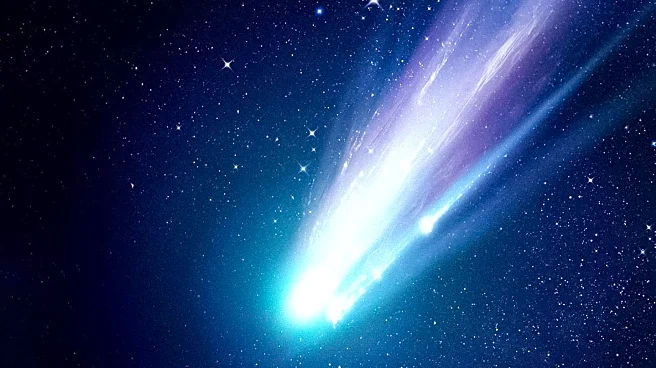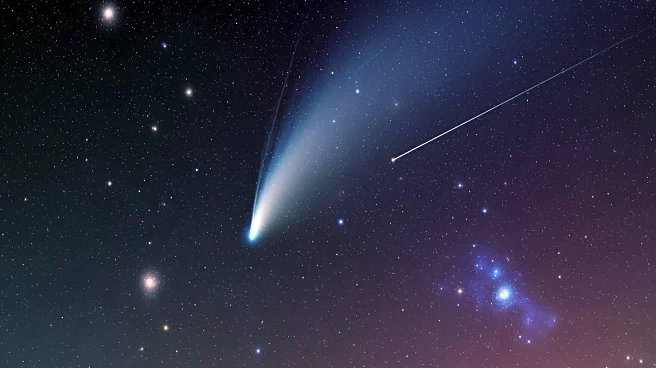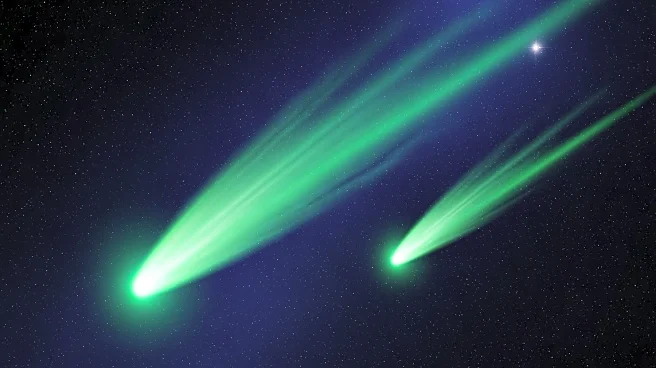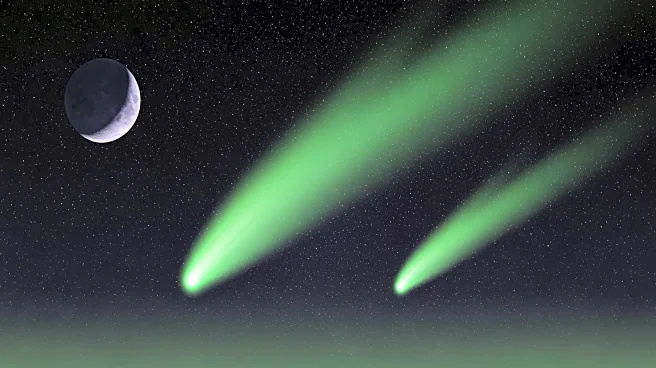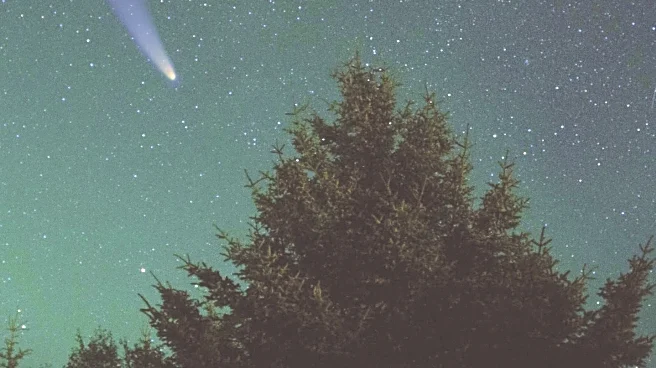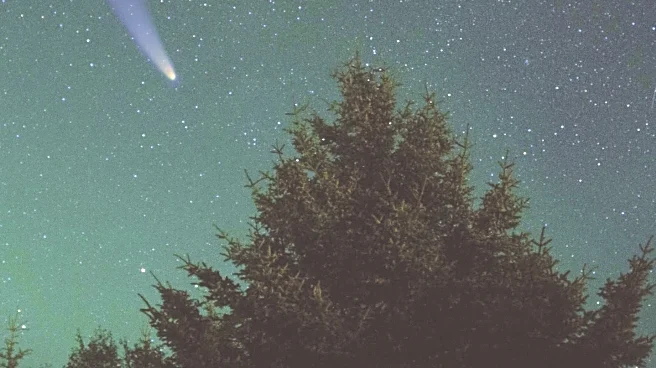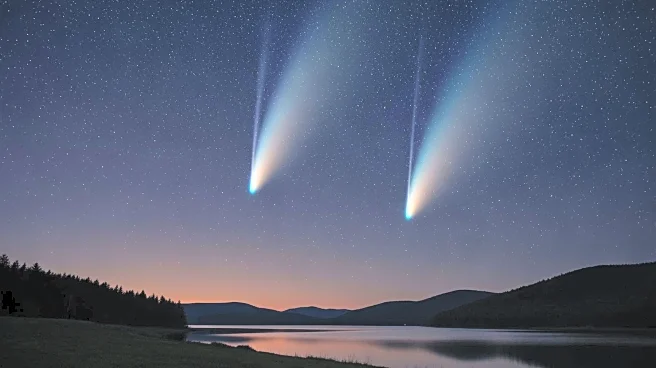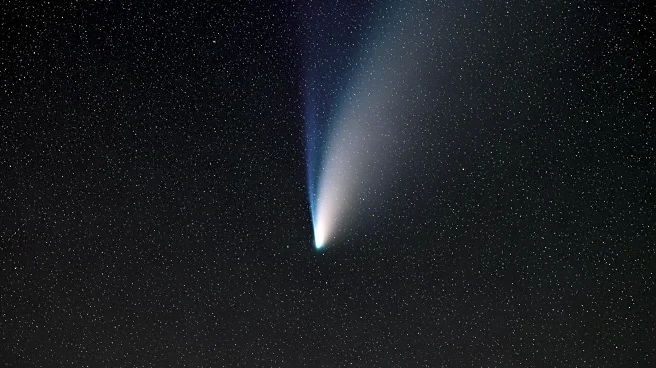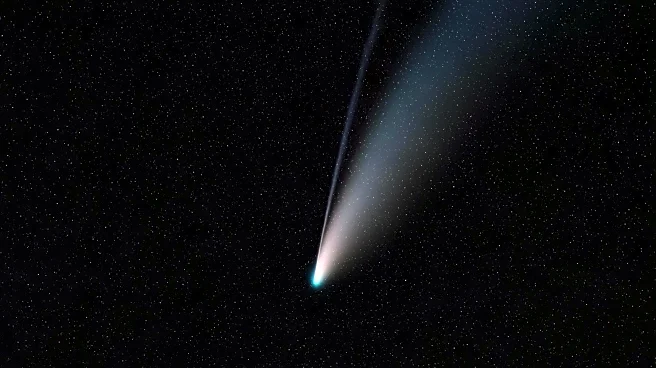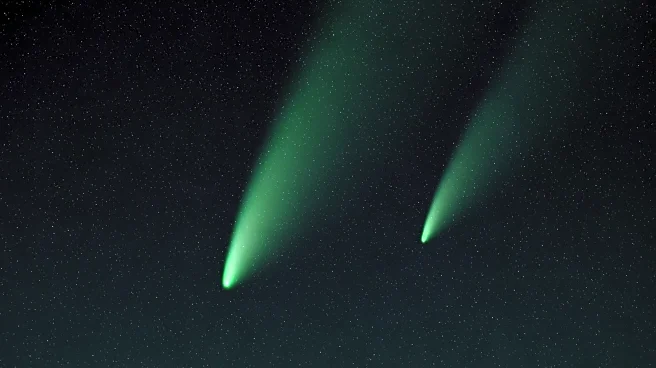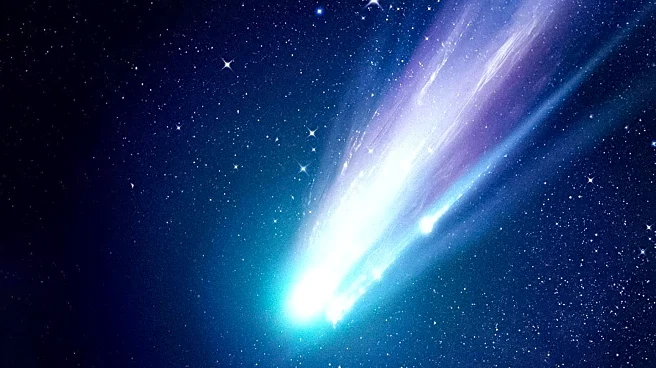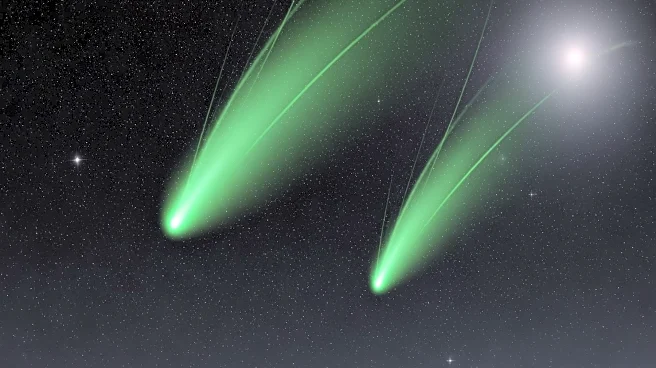What's Happening?
Stargazers in the Northern Hemisphere are set to witness a rare celestial event in late October, as two comets, C/2025 R2 (SWAN) and C/2025 A6 (Lemmon), are expected to be visible in the night sky. Comet SWAN, with an estimated brightness of magnitude
+6.1, may be visible to the naked eye under dark, moonless conditions around October 20. It will traverse several constellations, including Libra and Sagittarius. Comet Lemmon, anticipated to reach a brightness of magnitude +5, will be a strong binocular object visible from mid-October through November. This comet's visibility is expected to increase as it approaches its closest point to Earth. Both comets are best viewed with binoculars approximately 45 minutes after sunset, low in the western and southern skies.
Why It's Important?
The appearance of two comets in a single month is an uncommon event, providing a unique opportunity for astronomers and enthusiasts alike to observe these celestial bodies. This occurrence not only enriches the scientific community's understanding of cometary behavior and trajectories but also engages the public in astronomy, potentially inspiring interest in space sciences. The visibility of these comets could also contribute to educational initiatives, encouraging schools and institutions to organize viewing events and discussions about the significance of such astronomical phenomena.
What's Next?
Following the visibility of Comets SWAN and Lemmon, several other comets are expected to pass near Earth in late 2025 and early 2026, offering additional opportunities for observation. This sequence of events may prompt further research into cometary paths and compositions, as well as potential impacts on Earth's atmosphere. Astronomical societies and observatories may plan public viewing sessions and educational programs to capitalize on these events, fostering greater public engagement with space exploration.
Beyond the Headlines
The visibility of these comets may also have cultural implications, as celestial events often inspire artistic and literary interpretations. Historically, comets have been viewed as omens or symbols, and their appearance could influence contemporary cultural narratives. Additionally, the increased interest in astronomy could lead to discussions about the importance of preserving dark skies, free from light pollution, to ensure future generations can enjoy such natural spectacles.
